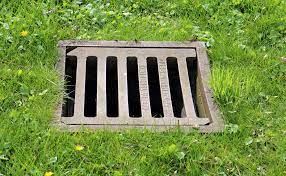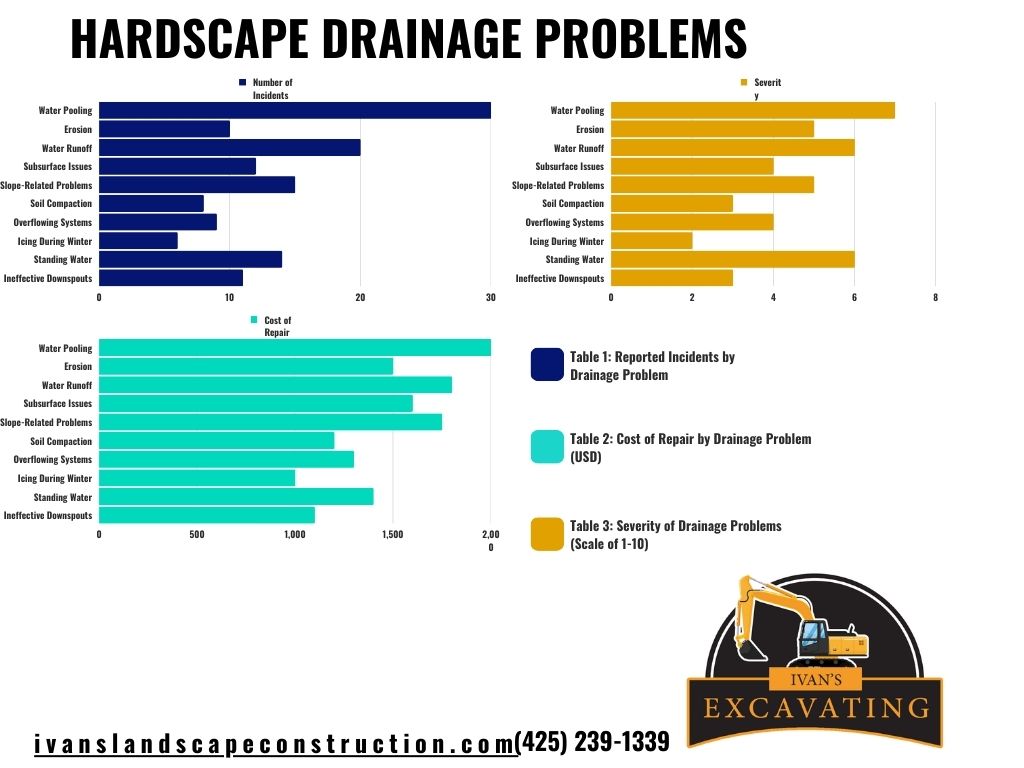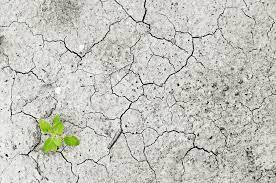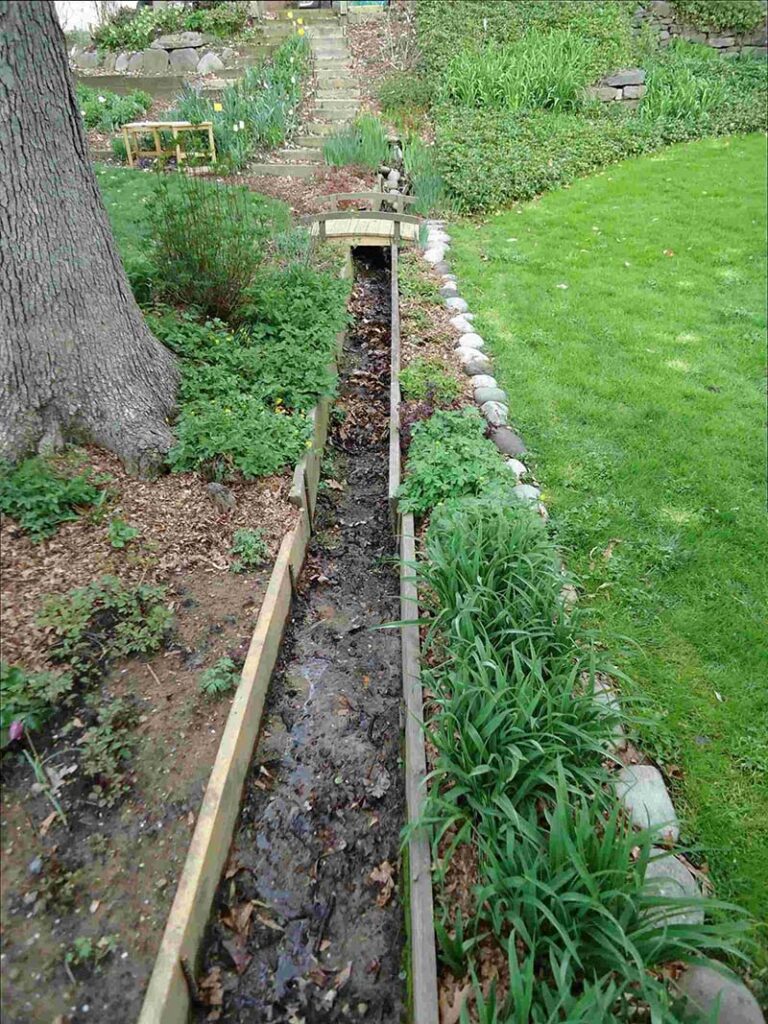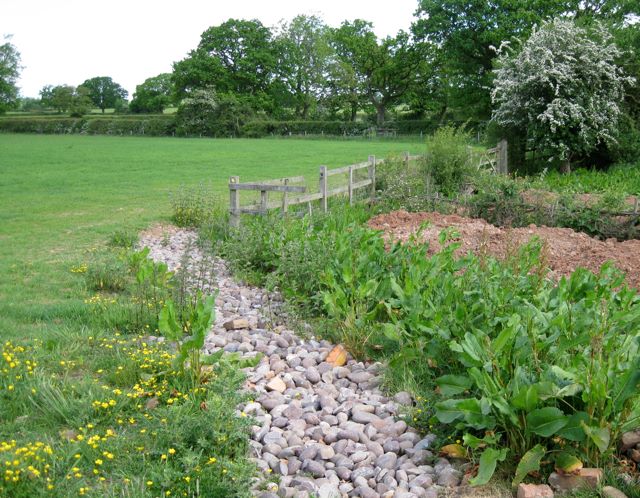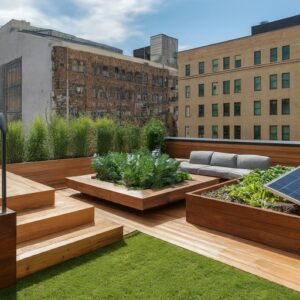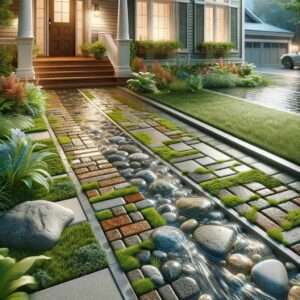The Issue With Drainage Problems
Proper drainage is a critical component of any hardscaping project in the rainy climate of Snohomish County, Washington. In this comprehensive article, we will examine common drainage challenges, outline solutions and best practices, provide a detailed case study, and offer preventative maintenance tips.
Water damage is something I myself had to personally deal with and it is a pain. I have complied some information in hopes to help inform others to avoid the nightmare I endured with drainage issues – Ben Shriver, Author.
Why Drainage Matters in Hardscaping
Effective drainage provides several benefits for Snohomish hardscapes:
- Prevents costly water damage to structures like patios, retaining walls, and driveways.
- Maximizes the longevity of your landscape investment.
- Increases the resale value of your home.
- Protects the integrity of your home’s foundation.
Signs of Poor Drainage in Hardscapes
Be on the lookout for these common red flags:
- Water pooling on the hardscape surface
- Erosion around pavers and stones
- Declining vegetation health
- Structural cracking or sinking
Typical Hardscape Drainage Issues
Heavy Rainfall
- Snohomish County’s location along the Puget Sound and proximity to the Cascade Mountains contributes to high annual precipitation averaging 37 inches per year.
- Frequent heavy rainfall events, especially during the fall and winter months, can produce rainfall rates exceeding the drainage capabilities of outdated and undersized stormwater systems.
- Brief but intense downpours associated with thunderstorms often cause localized urban flooding and storm runoff issues.
Improper Grading & Sloping
- Incorrect ground surface slopes on properties can prevent proper drainage of rainwater and snowmelt.
- Insufficient grading and leveling of the terrain results in low spots and depressions where water collects and pools.
- Neglecting to slope soil away from building foundations at a 5% grade minimum results in rainwater collecting near houses.
- Steep slopes without adequate runoff and erosion control measures can lead to rapid erosion of topsoil during heavy rainfall.
- Poor site planning and grading practices during construction projects often cause long-term pooling of water and excessive stormwater runoff.
Evaluating Your Hardscape’s Drainage
Steps for evaluating drainage:
- Conduct a site assessment.
- Identify low points.
- Check boundaries.
- Calculate slopes.
Improving Hardscape Drainage for your home in Snohomish
Several solutions can prevent pooling:
Surface Solutions Re-grading areas
- Carefully re-slope paved surfaces using a tamper and shovel to direct water flow away from the house. Aim for a 1-3% grade. For lawns, use a rake and topsoil to fill in low spots so water drains away from the foundation. Using rain gardens
- Dig a shallow trench, line it with a pond liner, and fill it with a rain garden soil mix. Plant native flowers, grasses, and shrubs. Position the rain garden to intercept roof and surface runoff. The garden will soak up the water. Installing permeable pavers
- Replace pavement with permeable pavers or poured permeable concrete to allow water to pass through. Ensure the base is graded and has a layer of aggregate to store and drain water. Subsurface Solutions Installing French drains
- Trench around the property perimeter and fill with gravel. Add perforated pipe if needed. French drains intercept water and discharge it away from the house. Using dry wells
- Install a pit filled with gravel and lined with filter fabric. Position near runoff sources. Dry wells allow water to soak into the ground, recharging groundwater. Installing catch basins
- Place catch basin boxes in low spots. Connect to below-ground drainage pipes. Catch basins gather and transport surface runoff to discharge away from the home. Water Management Downspout extensions
- Use elbows and lengths of pipe to direct roof runoff at least 5 ft from the house. Aim downspouts toward landscaped areas or drainage paths. Sump pumps
- Sump pumps remove groundwater from around the foundation and discharge it away from the house. Consider a backup pump and battery in case of power outages.
Drainage Maintenance Tips
Proactive maintenance is key:
Annually inspect drainage systems.
- Walk around your property and look for any signs of poor drainage or water buildup. Check places like your roof gutters, downspouts, driveway, patios, lawns, and any low-lying areas.
- Examine drainage components like gutters, downspouts, catch basins, French drains, sump pumps, and landscape drains. Look for clogs, cracks, leaks, misalignments, or any damage.
- Function test drainage systems when possible. Run water through downspouts and drains and observe the flow. Ensure sump pumps are operating properly.
- Inspect any drainage pipes you have access to for obstructions or root intrusion by using a camera system.
- Note any problem areas to be addressed. Perform repairs or schedule professional maintenance as needed.
Clear debris from gutters and drains.
- Use a ladder and scoop or garden hose to remove leaves, sticks, and other debris from gutters. Dislodge clogs.
- Unclog downspouts and drainage pipes. You can snake pipes or flush with a hose.
- Clean debris screens on drains. Remove leaves and other material around drain grates.
- Perform these tasks in spring and fall, and after storms. Doing so will improve drainage and prevent future blockages.
- Refill gravel in French drains as needed. Check French drains around your home’s foundation for sinkholes or depressions. Refill these spots with new gravel.
- Inspect the gravel depth. Over time, gravel can become compacted or migrate. Maintain a 4-6 inch gravel layer.
- Remove and replace the top layer of gravel if it has become very fines-filled. This will restore drainage performance.
- Add landscape fabric above the gravel layer if absent. This prevents soil from mixing into the gravel.
Conclusion
Words can’t explain the headache my ignorance of proper drainage caused. I ended up selling my home, the damage was so severe.
With the heavy rainfalls, it’s paramount to ensure your home is secure. As someone who has first hand experienced it, taking time to inspect your drains, and also your foundations for cracks can avoid massive structural damage to your home.
FAQ
Proper drainage is crucial to prevent water damage to structures like patios and retaining walls, to maximize the longevity of your hardscaping investment, and to add value to your property.
Common signs include:
- Water pooling on the surface
- Soil erosion around pavers and stones
- Declining health of nearby plants and grass
With an annual rainfall of 35-45 inches, heavy downpours are common in Snohomish County. These conditions can overwhelm inadequate or outdated drainage systems.
Heavy rainfall and improper sloping are common issues. Insufficient sloping can cause water to pool, while poorly planned slopes can prevent runoff.
After a heavy rain, assess the site for low points where water collects. Use a level and tape measure to calculate drainage slopes and identify problem areas.
Solutions include:
- French drains
- Re-grading or re-sloping
- Permeable paver systems
It’s advisable to inspect your drainage systems annually. Clean drains, gutters, and downspouts regularly, and refill gravel in French drains as needed.



